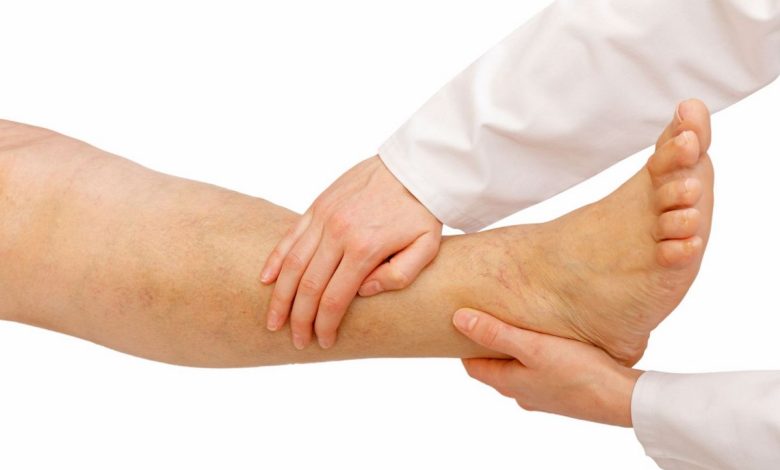Heel pain, heel pain: What's it, causes, symptoms, diagnostics, treatment, prevention

Heel pain; Pain – heel
Heel pain is a common condition, that affects many people and can occur for a variety of reasons. Pain can range from mild to severe and may be felt down, behind or to the side of the heel. In this article, we will discuss the reasons, symptoms, diagnosis and treatment options for heel pain.
What is heel pain?
Heel pain is discomfort, which is felt in the heel region of the foot. This can be caused by various factors, such as trauma, overuse and health conditions. Pain can be sharp, dull or burning, And it can occur with or without physical activity..
Causes of heel pain
There are several causes of heel pain., including:
- plantar fasciitis. This is the most common cause of heel pain.. It is caused by inflammation of the plantar fascia, fabric stripes, connects the calcaneus to the toes.
- Achilles tendinitis. This is inflammation of the Achilles tendon., which runs from the calf muscles to the calcaneus.
- Heel spur. This is a bony growth, which may occur on the underside of the calcaneus. It is often associated with plantar fasciitis.
- stress fractures. These are small cracks in the bones of the foot., which may arise due to repetitive loads or excessive loading.
- Sever's disease. This disease, that affect children and adolescents, occurs when the growth zone on the heel becomes inflamed.
- Arthritis. Heel pain can be caused by various types of arthritis., including rheumatoid arthritis and osteoarthritis.
- Perifericheskaya neuropathy. This condition, which affects the nerves in the feet, what can cause pain, tingling and numbness.
- Rupture of the plantar fascia. This is a tear in the plantar fascia., which may result from injury or overuse.
- Bursit. This is an inflammation of the bursa, small fluid-filled sac, which cushions and lubricates the joints.
Symptoms of heel pain
Symptoms of heel pain can vary depending on the underlying cause., but some common symptoms include:
- Pain below, back or side of the heel
- Pain, aggravated by exercise and decreased by rest
- Pain, worse in the morning or after prolonged sitting
- Stiffness and swelling of the heel
- Difficulty walking or standing for long periods of time
- Swelling to the touch
When to contact a healthcare professional
If you experience persistent heel pain or any other symptoms, it is important to see a doctor for evaluation. They can help determine the root cause of your pain and develop an appropriate treatment plan..
Questions, that your doctor may ask
During your appointment, your doctor may ask you a few questions about your symptoms and medical history., including:
- When You Have Heel Pain?
- What activities increase your pain?
- Have you had any recent injuries or accidents?
- Have you noticed any changes in your foot or ankle?
- Do you have any medical conditions, such as arthritis or diabetes?
- Are you taking any medication?
Diagnosis of heel pain
To diagnose the cause of your heel pain, your doctor will perform a physical examination of your foot and ask you questions about your symptoms and medical history. They may also order imaging studies., such as x-ray, MRI or ultrasound, to visualize the bones, soft tissues and joints of the foot.
Heel pain treatment
Treatment for heel pain depends on the underlying cause.. Some common treatment options include:
- Recreation. Avoid actions, that aggravate the pain, this will help relieve symptoms and speed up healing.
- Ice. Applying ice to the affected area can reduce pain and inflammation.
- Compression. Wearing compression socks or a bandage may help reduce swelling and support the foot..
- Elevated position. An elevated foot position can help reduce swelling and improve blood flow..
- Physiotherapy. Stretching and strengthening exercises help improve flexibility and reduce pain.
- Orthopedic insoles. Fitted shoe insoles or orthotics help support the foot and reduce pain.
- Medicines. Nonsteroidal anti-inflammatory drugs (NSAIDs), Taki how ibuprofen or naproxen, can relieve pain and inflammation.
- Injections. Corticosteroid injections help reduce inflammation and pain in the affected area.
- Operation. In severe cases, surgery may be required to remove a heel spur or repair a torn plantar fascia..
home treatment for heel pain
In addition to drug treatment, there are several things, which you can make at home, to relieve heel pain, including:
- Wearing comfortable, support shoes
- Stretching and massaging the affected foot
- Using over-the-counter arch supports or heel pads
- Applying heat or ice to the affected area
- Taking NSAIDs as directed by a doctor
- Avoid dangerous activities, which can aggravate the pain
Prevention of heel pain
To prevent heel pain, you can take several steps, including:
- Wearing shoes, that fits well and provides ample support
- Stretching and warming up before exercise or physical activity
- Avoid wearing high heels for a long time
- Gradually increase the intensity and duration of your workouts
- Maintaining a healthy weight
Conclusion
Heel pain can be a frustrating and debilitating condition., but with proper treatment and prevention, it is often possible to relieve symptoms and improve function. If you experience persistent heel pain or any other symptoms, it is important to seek medical attention, to determine the underlying cause and develop an appropriate treatment plan.
Used sources and literature
Grear BJ. Disorders of tendons and fascia and adolescent and adult pes planus. In: Azar FM, Beaty JH, eds. Campbell’s Operative Orthopaedics. 14th ed. Philadelphia, PA: Elsevier; 2021:chap 83.
Kadakia AR, Ayyer AA. Heel pain and plantar fasciitis: hindfoot conditions. In: Miller MD, Thompson SR, eds. DeLee Sink & Miller’s Orthopaedic Sports Medicine. 5th ed. Philadelphia, PA: Elsevier; 2020:chap 120.
McGee DL. Podiatric procedures. In: Roberts JR, Custalow CB, Thomsen TW, eds. Roberts and Hedges’ Clinical Procedures in Emergency Medicine and Acute Care. 7th ed. Philadelphia, PA: Elsevier; 2019:chap 51.
